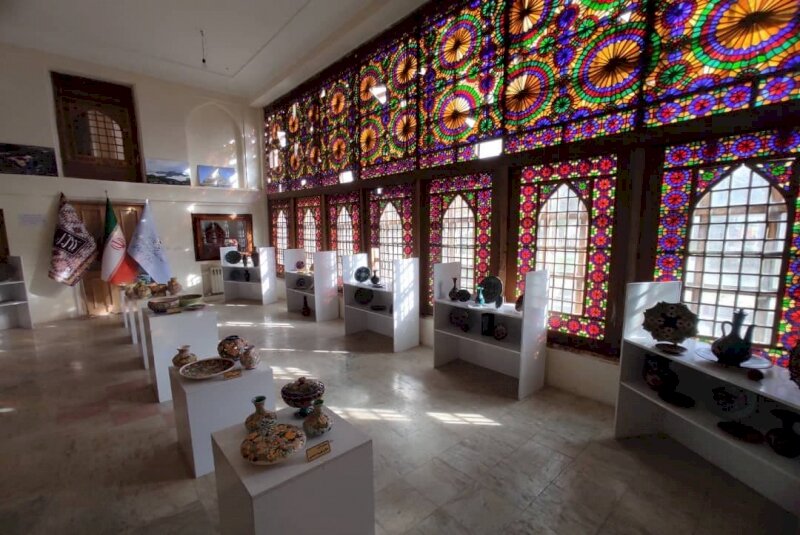Metalwork exhibition in northwest Iran marks 43rd anniversary of Islamic Revolution

TEHRAN – An exquisite collection of engraved copperware has been put on show in Ahar, East Azarbaijan province to mark the 43rd anniversary of the victory of the Islamic Revolution, which is known as Ten-Day Fajr celebrations (this year from February 1 to 11).
The exhibition, which is underway in the historical mansion of Qasem Khan Ahari, features artworks by a number of the masters of this field as well as their pupils, CHTN reported on Saturday.
The five-day exhibit is organized by Ahar’s office for the Cultural Heritage, Tourism, and Handicrafts.
Coppersmithing is one of the ancient handicrafts in Iran, which was practiced between the 6th and 7th millennium BC, however, the culmination of the art dates back to the Safavid era (1501-1736), when using copper dishes and objects has been popular among people.
The archeological evidence discovered at Tepe Sialk and other mining localities such as Talmesi and Anarak, and Tall-e Eblis indicates that several of the earliest sites of copper extraction were located in Iran.
During the 5th and 4th millennia BC in Iran, craftsmen were able to create enough heat to reach temperatures required for the melting of most of the then known raw materials, and thus extract metals.
On top of that copper-smelting techniques became well known in various parts of Iran in this period. With the advancement of the knowledge of metallurgy in the Achaemenid era, finely crafted copper and bronze objects were created, continuing through ancient times.
Although copper is mentioned in geographical texts much less often than precious metals, it appears to have been mined over wide areas of Persia in early Islamic times.
Objects apparently made of unalloyed copper survive in very small quantities from early Islamic times. The general rarity of early Islamic copper objects is probably because they were normally purely utilitarian, beaten out of sheet copper, and left undecorated for town or village use; they would have been melted down and reworked when old.
In the 15th century, however, decorated objects made of tinned copper became common. The reasons for this change are unclear but may have been related to the gradual dwindling of interest in inlaid base metals and the return to precious metals for luxury objects.
Under the Safavids, tinned copper seems to have been common throughout Persia, whence the taste spread to Mughal India. The designs on most Safavid tinned-copper objects seem to have been derived from the Timurid tradition, rather than that of the Turkman dynasties, though some are related in style to Safavid painting. For example, a group of objects with figural decoration has been linked to western Persia in the second quarter of the 17th century.
With 14 entries, Iran ranks first globally for the number of cities and villages registered by the World Crafts Council, as China with seven entries, Chile with four, and India with three ones come next.
ABU/AFM
Leave a Comment